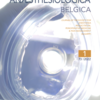The well-being of physicians during the COVID-pandemic in a Belgian tertiary hospital
COVID-19, mental well-being, healthcare workers, anaesthesiologists
Published online: Jun 23 2022
Abstract
Background: COVID-19 has become the largest medical challenge worldwide, affecting the physical and mental well-being of physicians. The aim of this study was to explore the well-being of physicians during the second wave of the COVID-19 outbreak in a Belgian tertiary hospital, with special attention to anaesthesiologists. They were confronted with overcrowded intensive care units, were mentally challenged during several months by an overwhelming workload.
Methods: All physicians of the Antwerp University Hospital (UZA) were invited to participate through an online anonymous questionnaire to objectively evaluate their well-being during the second wave of the COVID-19 outbreak in Belgium. Mental well-being was evaluated by the validated Warwick-Edinburgh Mental Well-being Scale (WEMWBS) summing 14 equally weighted questions (scoring range 1 to 5) about mental well-being. Demographic data such as age, gender, function, COVID exposure was collected.
Results: Ninety physicians, 42 residents and 48 staff members, completed the questionnaire with an average WEMWBS of 50.6±8.0. Participating residents were deployed more on COVID-19 departments compared to participating staff members (p=0.02) and reported a higher workload (p=0.001). Residents scored significantly lower on the WEMBWS compared to staff members (48.1±8.2 vs. 52.8±7.3, p=0.01). Also, 15 female anaesthesiologists scored significantly lower in the WEMWBS compared to their 12 male colleagues (p=0.03).
Conclusion: During the second wave of the COVID-19 outbreak in Belgium, residents reported a significantly higher workload due to COVID-19 and reported a significantly lower well-being compared to staff members.
